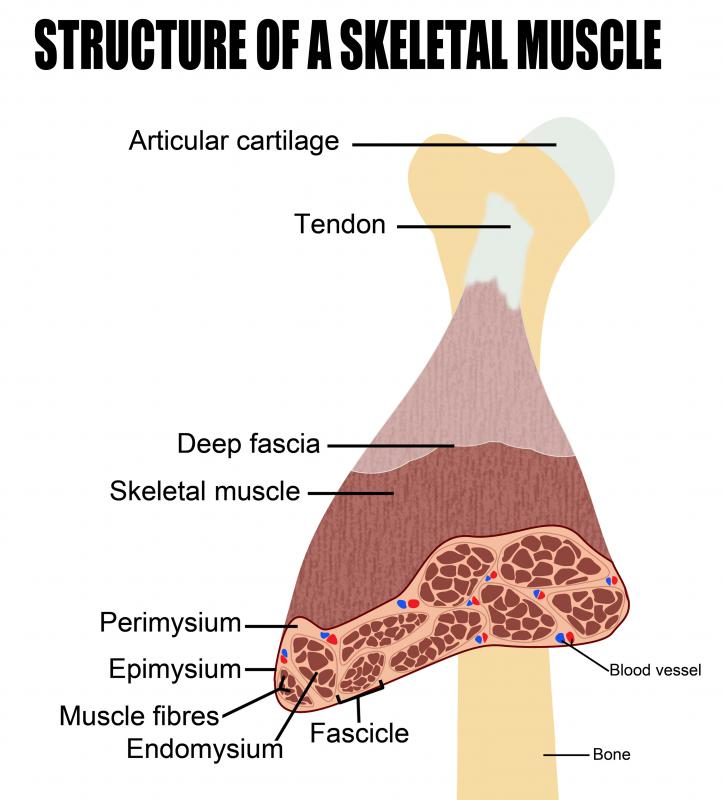At TheHealthBoard, we're committed to delivering accurate, trustworthy information. Our expert-authored content is rigorously fact-checked and sourced from credible authorities. Discover how we uphold the highest standards in providing you with reliable knowledge.
What is a Flexor Muscle?
A flexor muscle is any muscle that bends a body part at a joint. The contraction of a flexor muscle causes the angle between two bones to decrease, as in bending the knee. Flexor muscles are a type of skeletal muscle, or one that moves bones and is controlled voluntarily. Some examples of flexor muscles are the hip flexors, which flex the hip and move the thigh toward the body, and the bicep, which flexes the elbow and move the forearm toward the shoulder.
Skeletal muscles are one of three muscle types: smooth, cardiac, and skeletal. There are four types of skeletal muscles that are categorized by the type of movement they perform. These include the flexors, extendors, abductors, and adductors.

Flexor muscles are located in many parts of the body, including the elbow, forearm, fingers, toes, vertebrae, neck, hips, knees, feet, and hands. Muscles that flex the ankle or toes are called plantar flexors and dorsiflexors rather than flexors and extension muscles. Frequently, many muscles work together to flex a joint. Flexing the knee, for example, involves the use of the biceps femoris, semitendinosus, semimembranosus, and at least six additional muscles.

Most of the flexors are located in the sagittal plane of the body, which is an imaginary line that bisects the body into its front and back portions. Flexion and extension movements usually happen in the front to back direction, while side to side movements are performed by the abductors and adductors. Since muscles can only pull, and not push, they usually work in groups of two antagonistic muscles. A flexor muscle works opposite an extension muscle, which increases the angle of, or straightens, a joint.

Strong hip flexor muscles can be important in many activities that involve jumping and running. The hip flexor muscle, or iliopsoas, is made up of smaller muscles called the rectus femoris, psoas major, and illiacus. Injury to these muscles is common and can be prevented through strengthening the muscle, warming up slowly, and stretching after use. Hip flexors may be strengthened through exercises like hanging leg raises or sit ups, but non-athletes should probably avoid aggressively training hip flexors because overdeveloped hip flexors contribute to lower back pain.

Some doctors believe that repetitive flexing of the hand may contribute to the development of carpal tunnel syndrome. Even though this syndrome is caused by compression and inflammation of the nerves within the wrist, repeated hand flexing may irritate and aggravate other factors that cause symptoms. Doctors no longer see computer work as a primary cause of it, but may prescribe rest and hand splints to help prevent aggravation of symptoms that repeated hand flexion may cause.
AS FEATURED ON:
AS FEATURED ON:


















Discussion Comments
Properly stretching your flexor muscles in your upper and lower limbs can help reduce the risk of injury to these ever important muscles. Placing your palm on a wall and turning your torso away from your bicep will loosen the muscle and improve blood flow. It will also help improve the durability of your joints.
Post your comments